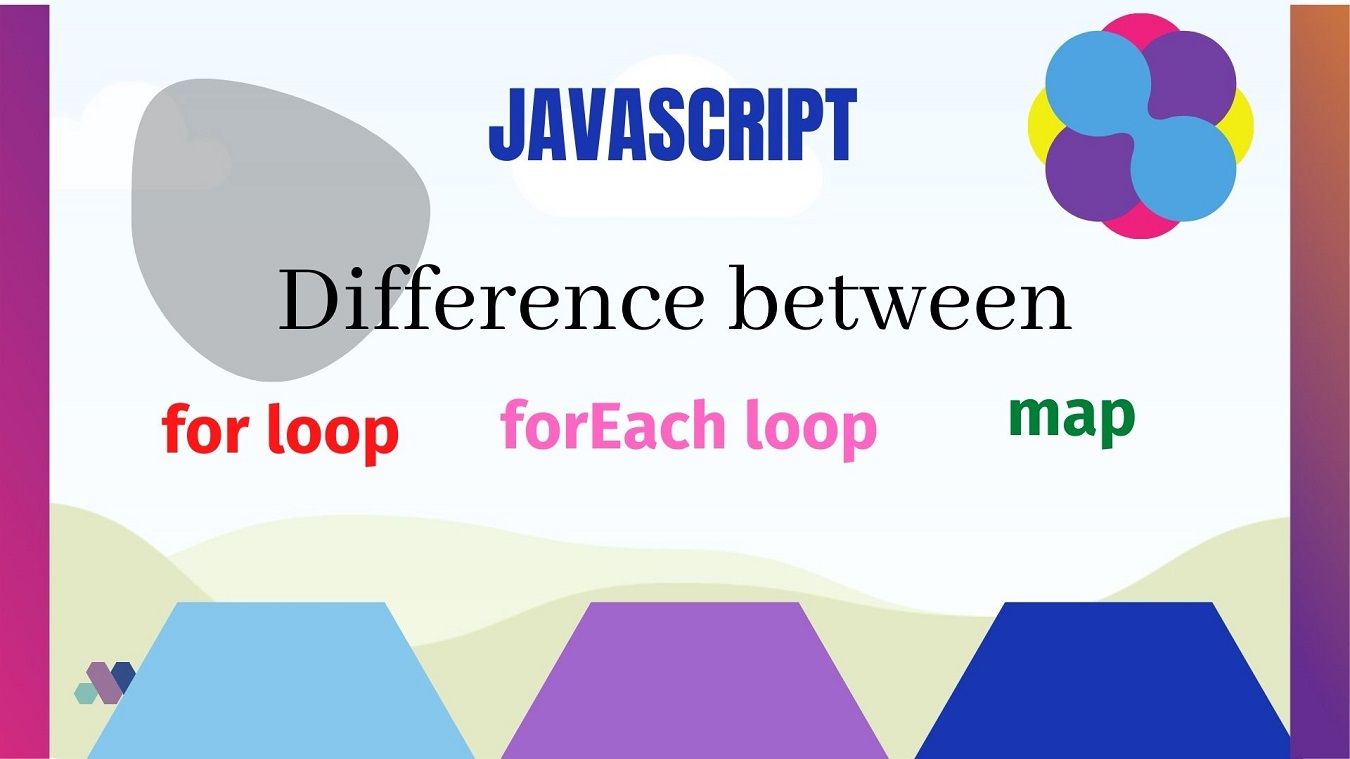JavaScript for vs forEach vs map | JS array methods
By Gyanendra Kumar Knojiya
Nov 5, 2021 7:17 PM

The distinction between a forEach and a for loop is explained in-depth in this article. The key distinctions between the two are listed below.
1. for loop
The JavaScript for loop is used to iterate over an array of items for a set number of times. It should be utilized if a particular number of iteration is known.
for (initial_value; condition; increment)
{
// code to be perform
}
Example
// table of 5
for (let i = 1; i <= 10; i++{
console.log(5 * i);
}
// output
5
10
15
20
25
30
35
40
45
50
2. forEach loop
The forEach() method loops across arrays as well, but it does it in a different way than the standard “for loop.” It passes the following arguments along with a callback function for each entry of an array:
- Current Value (required): The current array element’s value
- index (optional): The current element’s index number
- array (Optional): This is the array object to which the current element belongs.
Using the forEach method, we require a callback function to loop through an array.
Example
// Array of all days
const days = [
“Sunday”,
“Monday”,
“Tuesday”,
“Wednesday”,
“Thursday”,
“Friday”,
“Saturday”,
];
days.forEach(function (day) {
console.log(day);
});
The function will be run for each and every element in the array. At least one parameter in the callback should reflect the items of an array.
Output
Sunday
Monday
Tuesday
Wednesday
Thursday
Friday
Saturday
Syntax
forEach((element) => { ... } )
forEach((element, index) => { ... } )
forEach((element, index, array) => { ... } )3. map loop
The map() method populates a new array with the results of performing a function on each member of the calling array.
Example
const numbers = [1, 3, 4, 5, 7, 6, 2, 4];
const twoTimes = numbers.map((num) => num * 2);
It will loop over all of the elements in the array, multiply them by two, and return an array.
Output
[2, 6, 8, 10, 14, 12, 4, 8]
Syntax
map((element) => { ... })
map((element, index) => { ... })
map((element, index, array) => { ... })